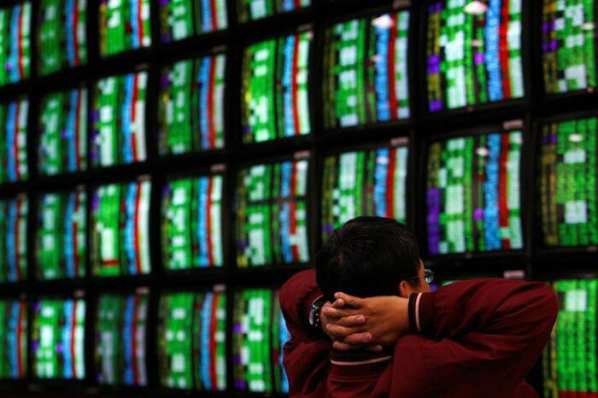Crude oil prices jumped again on Wednesday while Asian stocks struggled for footing as investors assessed the impact of the worsening conflict in Ukraine and a new U.S. ban on Russian oil.

The price of a barrel of crude, already on the march higher in January on supply worries and expectations of a strengthening global economic recovery, has rocketed upward since Russia launched its invasion of Ukraine on Feb. 24. Oil is now roughly double its early December low.
Risking even higher U.S. fuel prices that could curb economic growth, President Joe Biden on Tuesday imposed an immediate ban on Russian oil and other energy imports in retaliation for the invasion, amid strong support from American voters and lawmakers.
The ban caps sweeping U.S. and European sanctions imposed on Moscow for launching the largest war in Europe since World War Two. Russian strikes have targeted Ukrainian cities and killed hundreds of civilians.
Britain also announced it will phase out imports of Russian oil and oil products by the end of 2022.
“The oil shock by nature is an accruing one, not a one-off, and the potential for the market to hit $150 before returning to $100 is easier for investors to digest,” said Stephen Innes, managing partner at SPI Asset Management.
“Putting in force sanctions without first developing surrogate supply contingencies risks Brent crude (going) much higher.”
Global benchmark Brent was last trading at $131.39 per barrel, up 2.66% on the day but still off a peak of $139.13 touched on Monday.
U.S. West Texas Intermediate crude was up 2.19% at $126.41 per barrel.
Russia calls its actions in Ukraine a “special operation,” and warned earlier this week that prices could surge to $300 a barrel and it could close the main gas pipeline to Germany if the West blocked its oil exports.
In equity markets, MSCIs broadest index of Asia-Pacific shares outside Japan was down 0.26%, as a reversal in Chinese shares erased earlier gains.
Chinas blue-chip CSI300 index was down 1.27% after inflation data reflected a combination of soft domestic demand and high commodity prices, and as the country continued to report rising numbers of coronavirus cases.
In Hong Kong, where infections have surged to record highs, the Hang Seng was down more than 2%.
But broader regional losses were kept in check by gains elsewhere, with Australias resource-heavy ASX 200 up 0.85%. In Tokyo, the Nikkei rose 0.3%.
“I think we‘re getting Russia fatigue. We’ve had 10-12 days now of bombardment of Russia headlines. And whilst it‘s tragic what’s happening over there, at the same time I think weve priced in effectively the worst of the worst,” said Matt Simpson, senior market analyst at City Index.
Wobbly share price moves in Asia followed another day in the red on Wall Street, where the Dow Jones Industrial Average fell 0.56%, the S&P 500 lost 0.72% and the Nasdaq Composite dropped 0.28%.
“Markets remain volatile, unable to confidently price implications from the news flow given the complex state of the global economy,” said Rodrigo Catril, senior FX strategist at National Australia Bank.
Pointing to a retreat from safe-haven assets, the yen weakened 0.16 to 115.84, while the dollar edged down against a basket of its peers to 99.056.
The euro was 0.07% higher at $1.0907 and the rouble was last quoted at 122.5 to the greenback.
U.S. Treasury yields edged down, with benchmark 10-year notes last yielding 1.8507%, down from 1.871% late on Tuesday. The 2-year note last yielded 1.6008%, down from 1.629%.
The price of gold firmed 0.14% to $2,055.31 per ounce after earlier slipping on a strong dollar.
(Reporting by Andrew Galbraith; Editing by Sam Holmes and Kim Coghill)
Leave a Reply